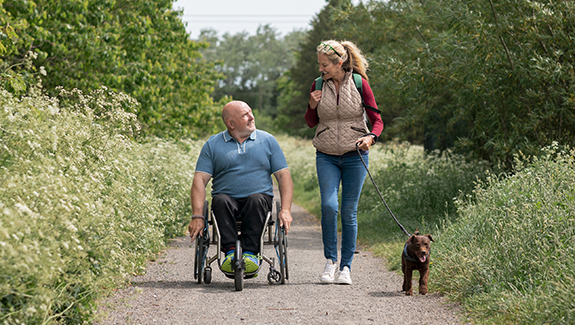Pressure Ulcers: 12 Ways to Prevent Them
Pressure injury wounds can happen after spinal cord injury if you’re not careful. Follow these tips consistently to avoid this common issue.

Get help preventing pressure ulcers.
After a spinal cord injury, you are at risk for developing pressure injuries. When your body stays in the same position, the skin in the areas that bear the most pressure can’t breathe. That’s where a pressure injury can form and do damage to your underlying tissue. You may have heard pressure injuries referred to as bedsores, and another medical term for this type of wound is decubitus ulcers.
Why pressure injuries happen
After your spinal cord injury, you are supporting your weight differently than you did before. Plus, with decreased sensation, you may not feel the need to shift your weight. This puts you at risk for pressure injuries. Dragging your body across a flat or inclined surface, or allowing your skin to be wet for a long time also increases this risk. One of the first signs of a problem may be a red spot, an area of hardness, or discoloration on an area of your skin that supports your body weight.
Pressure injury prevention tips
Your healthcare team will help you obtain a wheelchair cushion and other equipment that can help you avoid pressure injuries. You will also learn how to do pressure releases, or have someone else help you do them. Pressure releases take all the pressure off certain areas for a short period of time.
Once you have the proper equipment and learn the basics, follow these tips consistently to avoid pressure injuries:
- Do pressure releases every 15 to 20 minutes when you are in your wheelchair
- Check your skin twice a day using a mirror, or have someone do it for you
- Change your position in bed and in the chair frequently
- Learn transfer techniques to avoid dragging your skin across surfaces
- Be careful to avoid bumping and scraping
- Keep your skin conditioned and clean, and do not expose it to urine and stool
- Avoid prolonged sitting on wet clothes or on moist surfaces
- Eat a nutritious diet and drink adequate fluids
- Properly maintain and check your cushions – this is an important step
- Maintain a healthy weight and avoid becoming overweight
- Wear shoes that are one size larger than you wore prior to your injury, which will help prevent blisters and pressure on your feet and toes
- DON’T massage reddened areas, use heat lamps, or try to dry them out
If you develop a pressure injury
If you think you have a pressure injury, or might be getting one, contact your healthcare provider and stay off the area. Pressure injuries are treated differently than other types of injuries or skin problems. After an examination, your doctor can tell if you have damage and possibly an infection. You’ll probably need to take it easy for a while, and use special bandages that will help protect the area while it heals. In severe cases, surgery, hospitalization, medications, and skin grafts may be needed.




